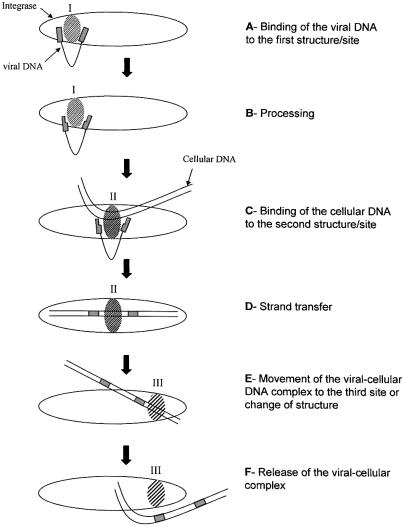Figure 9.
Model for the integration reactions and IN–DNA complex formation. This model does not take into account the oligomerization state of the integrase and is based on our own results and data from other groups reported in the text. The viral DNA could bind to a first DNA binding site in the catalytic center of the enzyme (A) and be positioned for the 3′-processing reaction (B). Then the cellular DNA could be bound to the protein (C) and structure changes might modify the positioning of the two substrates to allow the strand transfer reaction in a secondary site/structure (D). After the integration of the viral DNA into the cellular DNA, a final change of position of the complex could lead it to a new site or structure (E) from which it could be released (F). The positioning of the substrates for the strand transfer reaction could involve the V151E152S153 region. In all cases, the three domains of the protein (core, C-terminal and N-terminal) should be required for DNA binding and the reaction process.

